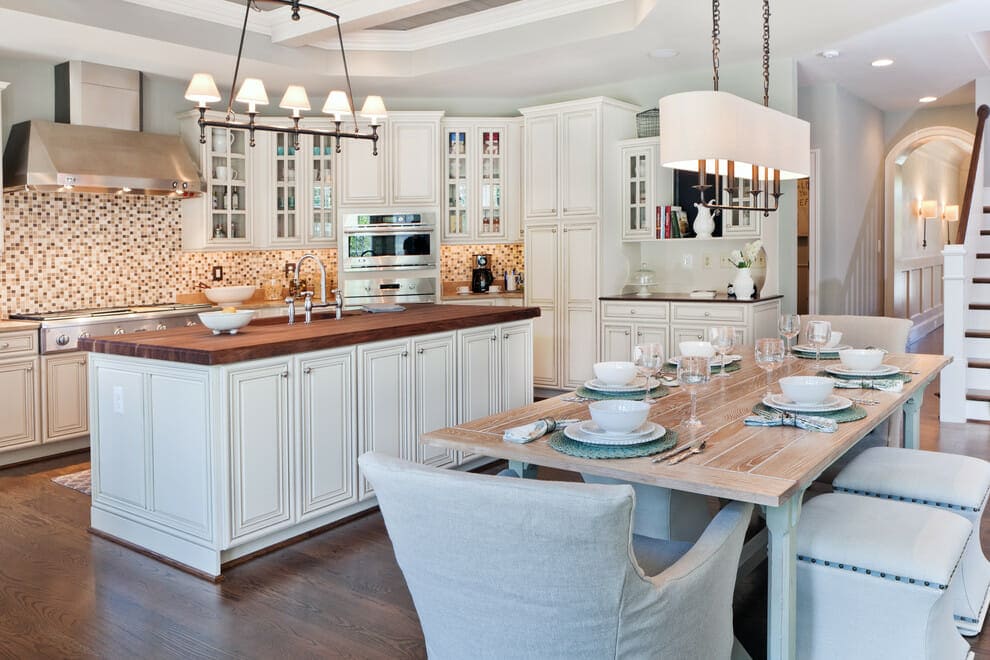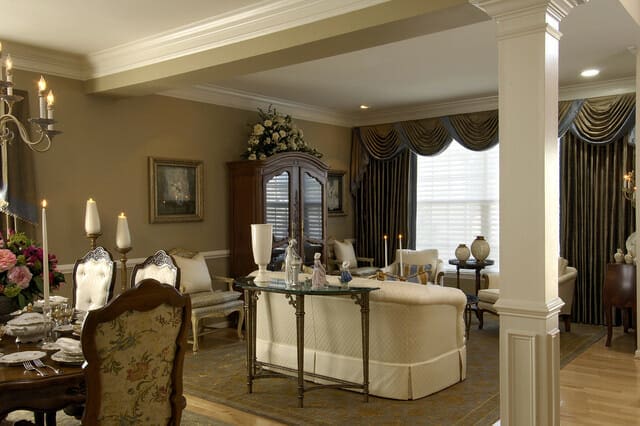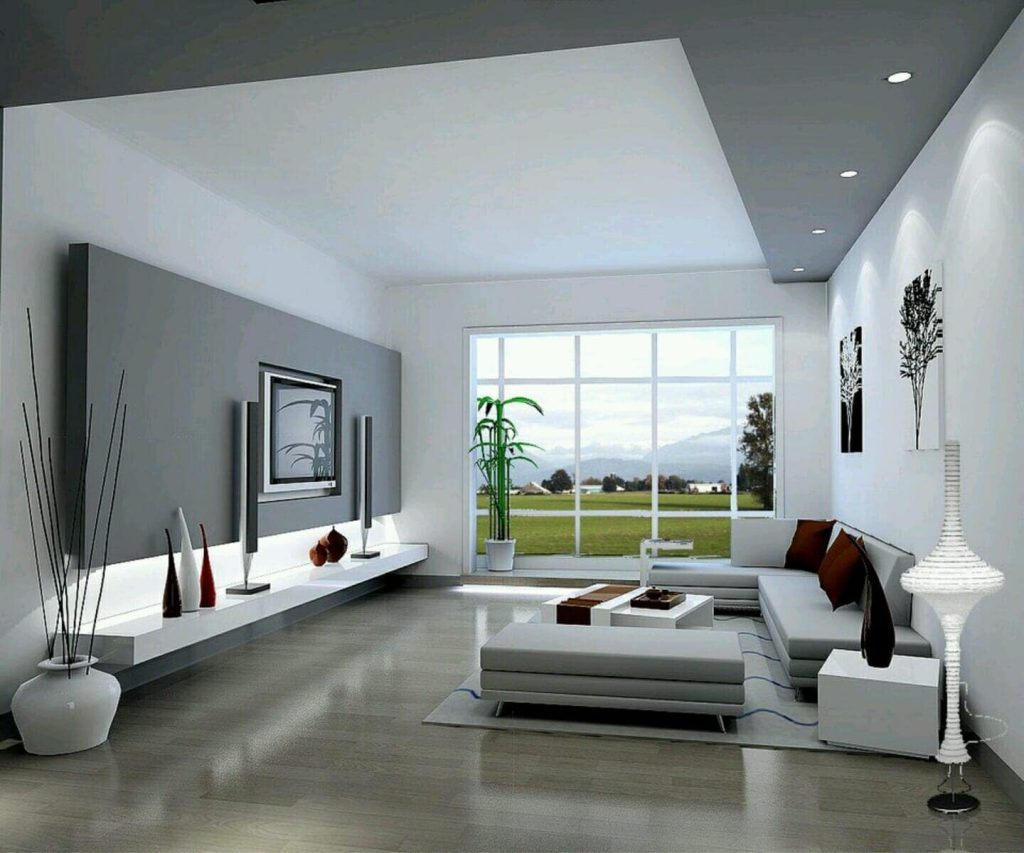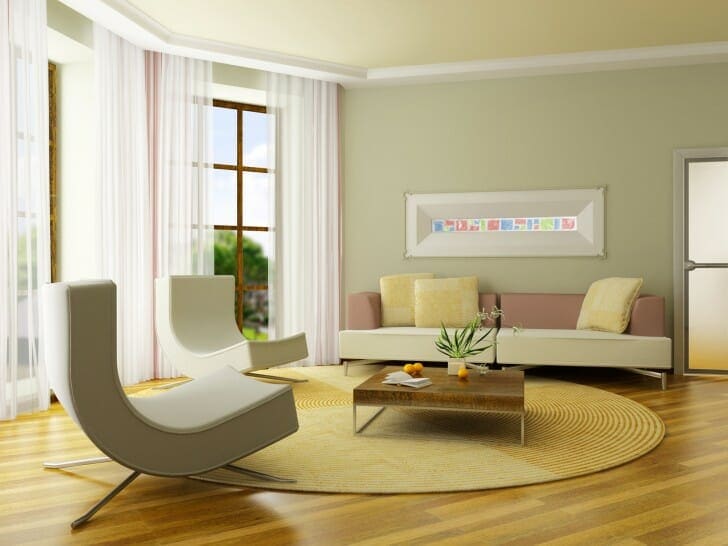What is Transitional Style?
It is a marriage of modern and traditional materials, furniture, fabrics, and finishes. The result? Enduring, elegant design that exudes comfort and is, of course, classic. In general, transitional style is a rather simple design, which is why you won’t find any pompous statements in the room. For the exact same reason, Mission, Shaker, and Asian-style furnishings are among the most desirable and preferred styles and blend with a transitional interior design quite beautifully!What is Different in Transitional Scheme?
Both modern and traditional styles may introduce a couple of contrasting elements in their designs. However, transitional style stands out as it brings the best of both worlds, in perfect harmony. As previously mentioned, this is achieved through the use of simple lines, warmth and light, and neutral color schemes.Ideas for Transitional Style Design
For example, the lines of transitional furniture are usually straight. This doesn’t mean, though, that you can’t throw in the soft, sweeping curve, for a good measure! Such furniture style will make your room comfy for practically everybody, as it helps create a look not too frilly and not overly manly. If you keep the color palettes very subtle (you can emphasize, for instance, on tan, beige, and ivory), you can expect a scheme that is both uncomplicated and relaxing. For an added touch of refined style, you can always focus on using moderately scaled pieces that infuse unassuming elegance.1. Farmhouse
 Image: ambranews
Are you fond of farmhouse-like rooms? Make the space inviting with neutral wall color serving as a magnificent backdrop, tying together the gems you have on display. That aside, any transitional room looks gorgeous with a signature light fixture accented with a blend of traditional and contemporary accessories, off-white walls, and warm woods. The only deep tones used in transitional designs are typically warm chocolate to brown wood tones.
Image: ambranews
Are you fond of farmhouse-like rooms? Make the space inviting with neutral wall color serving as a magnificent backdrop, tying together the gems you have on display. That aside, any transitional room looks gorgeous with a signature light fixture accented with a blend of traditional and contemporary accessories, off-white walls, and warm woods. The only deep tones used in transitional designs are typically warm chocolate to brown wood tones.
2. Flooring & Living Room
 Image: mohawkhome
Make your home a welcoming, relaxing spot by keeping flooring neutral. This means wood floors in warm tones and soft-colored carpets are always an excellent (and safe) option in traditional design. If you go this way, pay extra attention to the texture of your rugs. Since the flooring is neutral, you can play with sisal, hides, and Berber carpets, which are the among the most popular choices right now.
Give your living room a sense of soothing calmness with the use of harmonious color shades ranging from chocolate brown to white and don’t forget to add wooden elements, to create an informal note that matches the color scheme quite strikingly.
Another idea to bring comfort in your transitional style living room is to use nonpatterned fabrics combined with neutral tones.
Image: mohawkhome
Make your home a welcoming, relaxing spot by keeping flooring neutral. This means wood floors in warm tones and soft-colored carpets are always an excellent (and safe) option in traditional design. If you go this way, pay extra attention to the texture of your rugs. Since the flooring is neutral, you can play with sisal, hides, and Berber carpets, which are the among the most popular choices right now.
Give your living room a sense of soothing calmness with the use of harmonious color shades ranging from chocolate brown to white and don’t forget to add wooden elements, to create an informal note that matches the color scheme quite strikingly.
Another idea to bring comfort in your transitional style living room is to use nonpatterned fabrics combined with neutral tones.
3. Kitchen
Now, bringing transitional style in a kitchen always raises some controversy and negotiation! Why not try to surround your island with barstools that have more modern finishes and lines and see how it goes? Combining those two will definitely give you the look you desire! Also, white walls and silver light fixtures match excellently with a warm colored countertop, dark woods, and a brushed nickel faucet. Finally, for a perfect mix of traditional and modern elements, try adding warmly colored rectangular glass. You will certainly be pleasantly surprised with the result! Now, if you want to play with natural elements, such as wood, granite, and stone (all superb choices for transitional design), feel free to experiment. All three of them play a vital role in both contemporary and traditional styles. To see how quickly transitional style can be pulled off in a kitchen, try matching an antique armoire, orb-like lighting, rattan barstools, and white herringbone backsplash tiles! It can’t get any easier than that!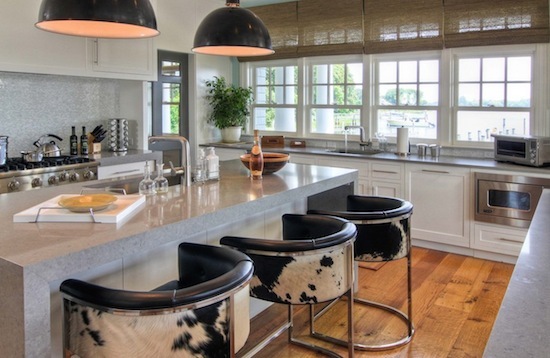 Image: lamps130.rssing
When thinking of remodeling your kitchen or create a new one, the term transitional is the first term that crosses your mind, as it is a popular term that helps bridge the gap between modern and traditional style, borrowing elements from each aesthetic. In design circles, the word transitional is often heard and much loved because it yields warmth in an environment, making everyone feel welcome, without losing the elegance and grandeur of classic components. If you look at transitional designs, no two ever look alike and that’s the best part of it all. Some read more traditional, others more modern and yet, they are still all wildly different from one another!
Want some hallmarks of transitional style? Here they are!
Image: lamps130.rssing
When thinking of remodeling your kitchen or create a new one, the term transitional is the first term that crosses your mind, as it is a popular term that helps bridge the gap between modern and traditional style, borrowing elements from each aesthetic. In design circles, the word transitional is often heard and much loved because it yields warmth in an environment, making everyone feel welcome, without losing the elegance and grandeur of classic components. If you look at transitional designs, no two ever look alike and that’s the best part of it all. Some read more traditional, others more modern and yet, they are still all wildly different from one another!
Want some hallmarks of transitional style? Here they are!
Materials
Mixing manufactured and natural materials is, perhaps, the cornerstone of transitional style. A kitchen of this style will often feature glass, steel, stone, and wood or marble and they will all be seem in the same space. For example, you may see concrete floors, wood cabinets, stainless steel, and marble working together to give a harmonious whole and maintain a sense of warmth.Color
Regarding color, transitional kitchens usually feature neutrals in different shades (I.e varying tones of brown in the island, floor, furnishings, and cabinetry), although you can also add a pop of color here and there (just don’t be too loud), for a timeless and sophisticated look.Texture
When it comes to color, the majority of interior designers agree that transitional kitchens are subdued. However, this doesn’t mean they are dead boring! On the contrary, transitional kitchens often play with texture and use everything from rough or polished stone to tile surfaces to provide visual interest and please the eye. What about the cabinetry?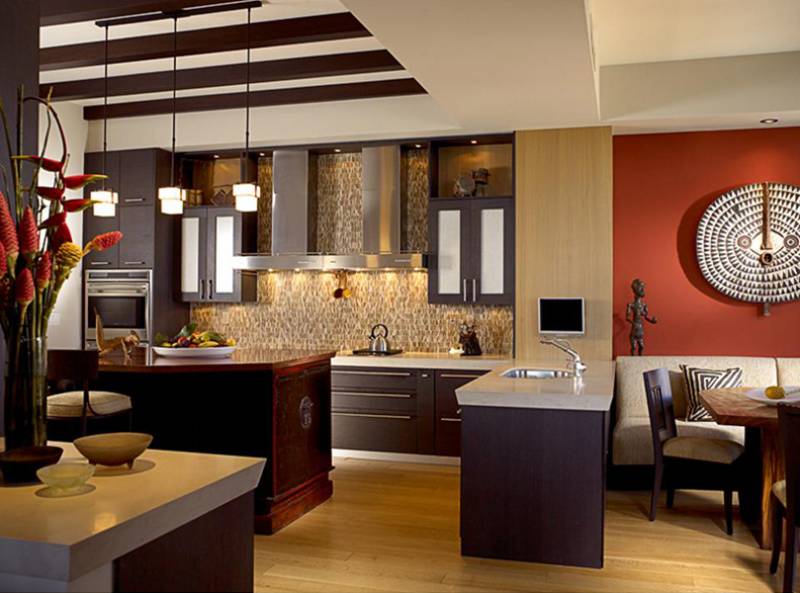 Image: negocioinversiones
Many people ask whether their cabinetry should have an intricate carving or not. Well, in transitional kitchens we usually avoid using too detailed designs or elaborate hardware because we mainly want to keep a low profile in transitional kitchens overall.
The secret to keep it from looking too contemporary is the material of choice. Generally, wood is a great option, as opposed to lacquer or glass that give a modern pinch and make your style stray from transitional. So, if you keep the cabinetry as minimal as possible (a warm rich wood would be perfect), paying attention to details (i.e. use recessed handles), then the exciting balance between the clean lines and the natural materials will create a spectacular outcome, meaning an inviting, yet uncluttered effect, for sure!
The old and new: A marriage that always works!
If you think things though in the broader sense, you will realize that transitional is so well defined by that heading! Take a transitional kitchen, for example. It borrows references styles or elements from the loved past and blends them with modern features to give birth to something fresh and new. What is even more fascinating is that you have a saying on how you want to combine the old and the new, the past and the present, so that you get a kitchen that speaks of you and your personal style 100%.
Image: negocioinversiones
Many people ask whether their cabinetry should have an intricate carving or not. Well, in transitional kitchens we usually avoid using too detailed designs or elaborate hardware because we mainly want to keep a low profile in transitional kitchens overall.
The secret to keep it from looking too contemporary is the material of choice. Generally, wood is a great option, as opposed to lacquer or glass that give a modern pinch and make your style stray from transitional. So, if you keep the cabinetry as minimal as possible (a warm rich wood would be perfect), paying attention to details (i.e. use recessed handles), then the exciting balance between the clean lines and the natural materials will create a spectacular outcome, meaning an inviting, yet uncluttered effect, for sure!
The old and new: A marriage that always works!
If you think things though in the broader sense, you will realize that transitional is so well defined by that heading! Take a transitional kitchen, for example. It borrows references styles or elements from the loved past and blends them with modern features to give birth to something fresh and new. What is even more fascinating is that you have a saying on how you want to combine the old and the new, the past and the present, so that you get a kitchen that speaks of you and your personal style 100%.
4. Entry & Bathroom
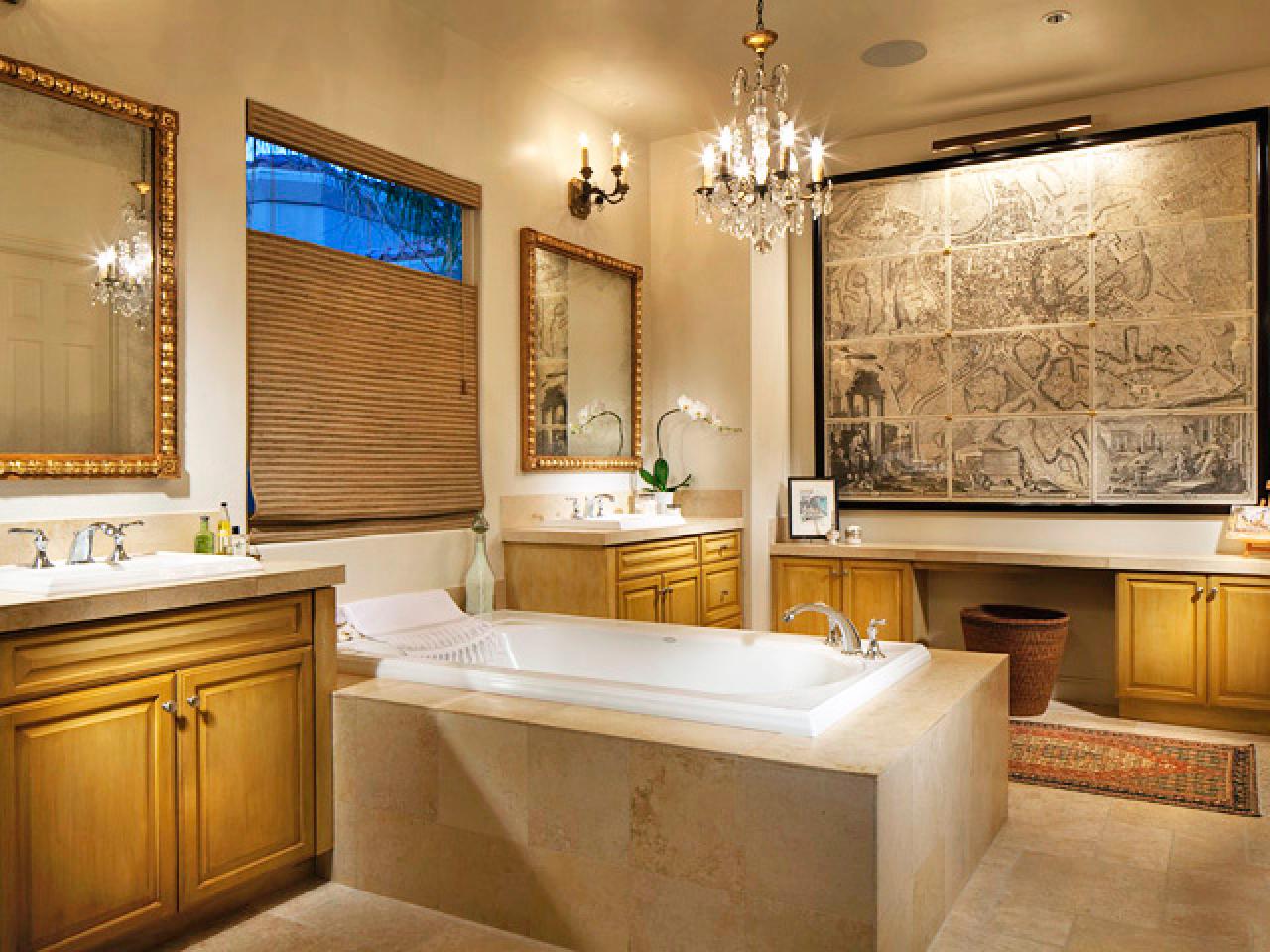 Image: hgtv
Blend contemporary doors and lighting with an antique dresser and organic elements (or vice versa!) to create the transitional entry of your dreams. As for the bathroom, your sleek vanity warms up with rich brown wall colors that help blur the line between modern and traditional design! If there is room for a tip here, we suggest you select grout in darker undertones and set subway tile to soften a modern look into a transitional (if you can find staggered joint subway tiles, the result will be excellent).
Useful Tip: Make sure you use repeating materials and colors among rooms inside the home and use fabrics in varying textures (and similar colors), as well as wall paint in the same tone. This will help make your space has natural flow and be balanced.
Image: hgtv
Blend contemporary doors and lighting with an antique dresser and organic elements (or vice versa!) to create the transitional entry of your dreams. As for the bathroom, your sleek vanity warms up with rich brown wall colors that help blur the line between modern and traditional design! If there is room for a tip here, we suggest you select grout in darker undertones and set subway tile to soften a modern look into a transitional (if you can find staggered joint subway tiles, the result will be excellent).
Useful Tip: Make sure you use repeating materials and colors among rooms inside the home and use fabrics in varying textures (and similar colors), as well as wall paint in the same tone. This will help make your space has natural flow and be balanced.
What about window treatments?
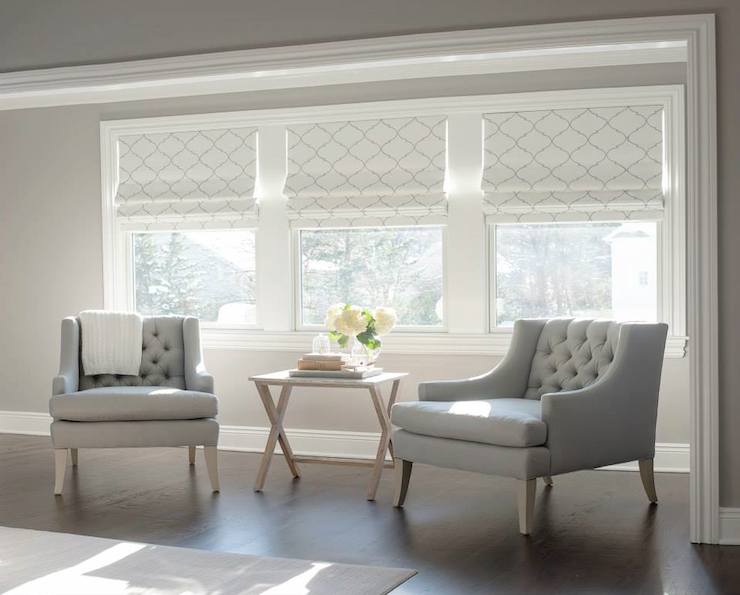 Image: decorpad
Window treatments in transitional design are usually modest. So, we often see drapes in one color shirred onto wood or unadorned metal rods. Whenever shades or blinds are the selected window treatment, we tend you use woven-wood blinds that are rich in texture or Roman shades, which give the visual effect we want with their clean lines. (check out the top 10 window treatments trends).
Important Note: In most cases, what is most important is window styling, so don’t burn all your energy and resources on window coverings, unless you feel strongly about the latter.
Extra Tips:
1. Make sure you conceal clutter in baskets. This will help keep the room clean and consistent and also provide texture.
2. A wooden ceiling can blend traditional furniture and tiles with a modern twist and provide the interest in a room’s composition.
3. Display stylish signature pieces, such as photos and artwork, in an understated way, without much fanfare. Choose simple frames and basic white mats.
Image: decorpad
Window treatments in transitional design are usually modest. So, we often see drapes in one color shirred onto wood or unadorned metal rods. Whenever shades or blinds are the selected window treatment, we tend you use woven-wood blinds that are rich in texture or Roman shades, which give the visual effect we want with their clean lines. (check out the top 10 window treatments trends).
Important Note: In most cases, what is most important is window styling, so don’t burn all your energy and resources on window coverings, unless you feel strongly about the latter.
Extra Tips:
1. Make sure you conceal clutter in baskets. This will help keep the room clean and consistent and also provide texture.
2. A wooden ceiling can blend traditional furniture and tiles with a modern twist and provide the interest in a room’s composition.
3. Display stylish signature pieces, such as photos and artwork, in an understated way, without much fanfare. Choose simple frames and basic white mats.
